
Alfred Unser was an American automobile racing driver, the younger brother of fellow racing drivers Jerry and Bobby Unser, and father of Al Unser Jr. He was the second of four men to have won the Indianapolis 500 four times, the fourth of six to have won the race in consecutive years, and the winner of the National Championship in 1970, 1983, and 1985. The Unser family has won the Indy 500 a record nine times. He was the only person to have both a sibling (Bobby) and child as fellow Indy 500 winners. Al's nephews Johnny and Robby Unser have also competed in that race. In 1971, he became the only driver to date to win the race on his birthday.

The 59th 500 Mile International Sweepstakes was held at the Indianapolis Motor Speedway in Speedway, Indiana on Sunday, May 25, 1975. A. J. Foyt started on the pole position and Bobby Unser won his second Indianapolis 500. Dan Gurney, one of the founders of All American Racers, who finished second as a driver himself in 1968–1969, won his first and only Indy 500 as a car owner. Gurney's Eagle chassis itself scored its third "500" win. The race was part of the 1975 USAC National Championship Trail.

The 61st 500 Mile International Sweepstakes was held at the Indianapolis Motor Speedway in Speedway, Indiana on Sunday, May 29, 1977. Considered one of the most historically significant editions of the Indianapolis 500, several sidebar stories complemented the unprecedented accomplishment of race winner A. J. Foyt. Foyt became the first driver to win the Indianapolis 500 four times. As of 2023, Foyt's record has been tied by Al Unser Sr., Rick Mears and Hélio Castroneves, but still stands as an Indy 500 record. Foyt's victory is also the last time the winning car was built entirely within the United States.
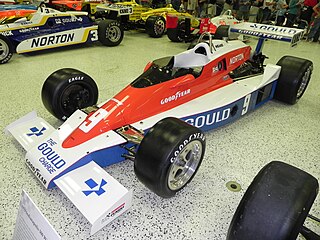
The 63rd 500 Mile International Sweepstakes was held at the Indianapolis Motor Speedway in Speedway, Indiana, on Sunday May 27, 1979. Second-year driver Rick Mears took the lead for the final time with 18 laps to go, and won his first of four Indianapolis 500 races. It was also Mears' first of a record six Indy 500 pole positions. Brothers Al and Bobby Unser combined to lead 174 of the 200 laps, but Al dropped out around the midpoint, and Bobby slipped to 5th place at the finish nursing mechanical issues. It was also Roger Penske's second Indy 500 victory as a car owner.

The 64th 500 Mile International Sweepstakes was held at the Indianapolis Motor Speedway in Speedway, Indiana on Sunday, May 25, 1980. Johnny Rutherford won the pole position, led 118 laps, and won the race by a commanding 29.92 second margin. After failing to finish the race the year before, Jim Hall's radical new Chaparral 2K ground effects chassis was a heavy favorite entering the month, and drove a flawless race. Rutherford, the winner in 1974 and 1976, became the sixth driver to win the Indy 500 three times.

The 65th Indianapolis 500 was held at the Indianapolis Motor Speedway in Speedway, Indiana, on Sunday, May 24, 1981. The race is widely considered one of the most controversial races in Indy history. Bobby Unser took the checkered flag as the winner, with Mario Andretti finishing second. After the conclusion of the race, USAC officials ruled that Unser had passed cars illegally while exiting the pit area during a caution on lap 149. Unser was subsequently issued a one-position penalty. The next morning, the official race results were posted, and Unser was dropped to second place. Andretti was elevated to first place and declared the race winner.

The 66th Indianapolis 500 was held at the Indianapolis Motor Speedway in Speedway, Indiana on Sunday, May 30, 1982. Gordon Johncock, who had previously won the rain-shortened 1973 race, was the winner. Polesitter Rick Mears finished second by a margin of 0.16 seconds, the closest finish in Indy 500 history to that point.

The 67th Indianapolis 500 was held at the Indianapolis Motor Speedway in Speedway, Indiana, on Sunday, May 29, 1983. After finishing second three times, winning the pole position twice (1977–1978), and being the fastest qualifier one additional time (1981), Tom Sneva finally shook his "bridesmaid" status and won his first and only Indianapolis 500. The win also represented the record seventh Indy victory that chief mechanic George Bignotti was involved with.
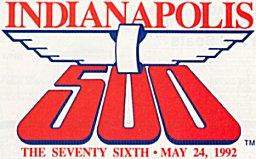
The 76th Indianapolis 500 was held at the Indianapolis Motor Speedway in Speedway, Indiana, on Sunday, May 24, 1992. The race is famous for the fierce battle in the closing laps, as race winner Al Unser Jr. held off second place Scott Goodyear for the victory by 0.043 seconds, the closest finish in Indy history. Unser Jr. became the first second-generation driver to win the Indy 500, following in the footsteps of his father Al Unser Sr. He also became the third member of the famous Unser family to win the race.

The 75th Indianapolis 500 was held at the Indianapolis Motor Speedway in Speedway, Indiana, on Sunday, May 26, 1991. Rick Mears won from the pole position, becoming the third four-time winner of the Indy 500, joining A. J. Foyt and Al Unser. During time trials, Mears also established an Indy record by winning his sixth career pole position. The month of May for Mears was tumultuous, as he suffered his first ever crash at Indy since arriving as a rookie in 1977. The wreck during a practice run totaled his primary car, and broke a bone in his right foot. Mears kept the injury mostly secret, and later admitted that the pain he experienced during the race was so bad, he had to cross his legs in the car and push the accelerator pedal down with his left foot.

The 71st Indianapolis 500 was held at the Indianapolis Motor Speedway in Speedway, Indiana, on Sunday May 24, 1987. After dominating practice, qualifying, and most of the race, leader Mario Andretti slowed with mechanical problems with only 23 laps to go. Five laps later, Al Unser Sr. assumed the lead, and won his record-tying fourth Indianapolis 500 victory. At age 47, just days short of his 48th birthday, Unser became the oldest winner of the Indy 500, a record that still stands as of 2024. During the month of May, an unusually high 25 crashes occurred during practice and qualifying, with one driver in particular, Jim Crawford, suffering serious leg injuries.

The 68th Indianapolis 500 was held at the Indianapolis Motor Speedway in Speedway, Indiana on Sunday May 27, 1984. Rick Mears, who previously won in 1979, won his second Indy 500 victories driving for Penske. Contenders Tom Sneva and Mario Andretti dropped out of the race in the second half, leaving Mears alone two laps ahead of the field, and he cruised to the victory. Three months after the race, however, Mears would suffer severe leg injuries in a practice crash at Sanair.
The 1979 SCCA/CART Indy Car Series was the inaugural Championship Auto Racing Teams (CART) American open wheel racing championship series. The season consisted of 14 races. Rick Mears was the national champion, and the rookie of the year was Bill Alsup. The 1979 Indianapolis 500 was sanctioned by USAC, but counted towards the CART points championship. Rick Mears won the Indy 500, his first of four victories in the event.
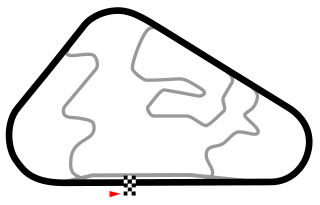
The Pocono 500 was an IndyCar Series race held at Pocono Raceway in Long Pond, Pennsylvania, located in the Pocono Mountains. The first Indy car race at Pocono was held in 1971. It was the first major event held at the track, shortly after its completion. The race was sanctioned by USAC from 1971 to 1981, and then by CART from 1982 to 1989, and was known as the Pocono 500. The race was removed from the CART calendar following the 1989 running, due to poor track conditions, as well as poor revenue for the promoter.

The 1980 CART PPG Indy Car World Series season was the second in the CART era of U.S. open-wheel racing. It consisted of twelve races, beginning in Ontario, California on April 13 and concluding in Avondale, Arizona on November 8. The PPG Indy Car World Series Drivers' Champion and Indianapolis 500 winner was Johnny Rutherford. Rookie of the Year was Dennis Firestone. The entire season, including the 64th Indianapolis 500, was to be co-sanctioned by both the USAC and CART under the banner of the Championship Racing League (CRL). However, USAC withdrew from the arrangement after five races.

The 1978 Pocono 500, the 8th running of the event, was held at the Pocono Raceway in Long Pond, Pennsylvania, on Sunday, June 25, 1978. Branded as the 1978 Schaefer 500 for sponsorship reasons, the race was won by Al Unser who one month earlier had won the Indianapolis 500. Two months later, Unser won the California 500 to become the only driver to win all three of IndyCar's Triple Crown of 500 mile races in the same year.
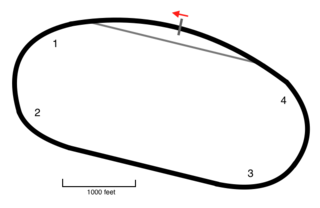
The 1984 Michigan 500, the fourth running of the event, was held at the Michigan International Speedway in Brooklyn, Michigan, on Sunday, July 22, 1984. The event was race number 8 of 16 in the 1984 CART PPG Indy Car World Series. The race was won by Mario Andretti, his first Michigan 500 victory.

The 1987 Michigan 500, the seventh running of the event, was held at the Michigan International Speedway in Brooklyn, Michigan, on Sunday, August 2, 1987. Branded as the 1987 Marlboro 500 for sponsorship reasons, the race was won by Michael Andretti, his first Michigan 500 victory. The event was race number 9 of 15 in the 1987 CART PPG Indy Car World Series.
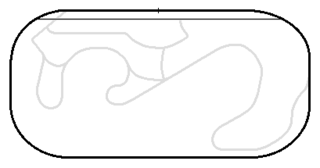
The 1977 California 500, the eighth running of the event, was held at the Ontario Motor Speedway in Ontario, California, on Sunday, September 4, 1977. The event was race number 12 of 14 in the 1977 USAC Championship Car season. The race was won by Al Unser, his first win in the California 500.

The 1978 California 500, the ninth running of the event, was held at the Ontario Motor Speedway in Ontario, California, on Sunday, September 3, 1978. The event was race number 13 of 18 in the 1978 USAC Championship Car season. The race was won by Al Unser, who became the only driver with win all three races in IndyCar's Triple Crown in one year.




















